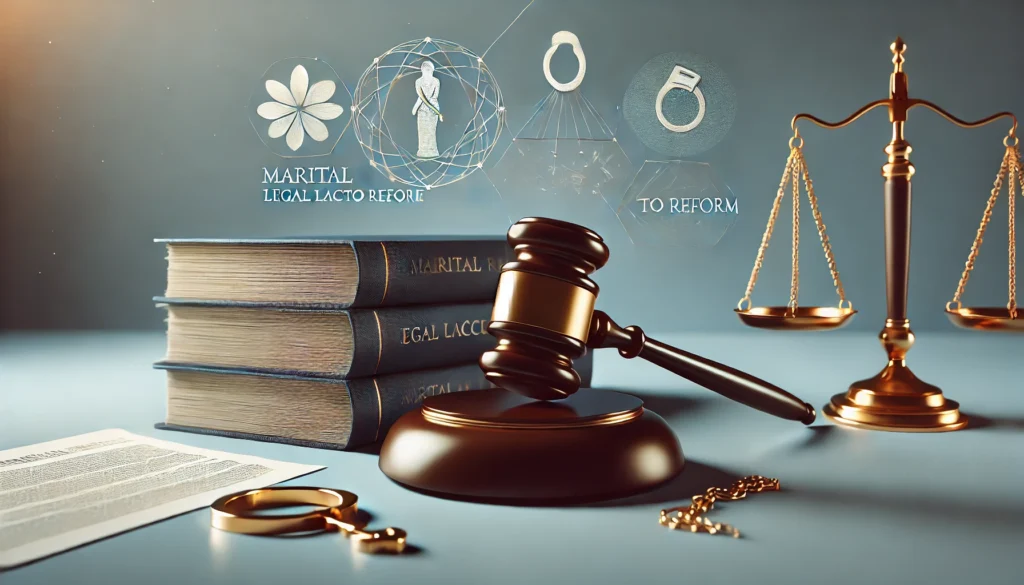Published on 11th June 2025
Authored By: Aashna Malik
Maharaja Surajmal Institute
Abstract
The changing landscape of workplace discrimination laws and employee rights in India is the subject of discussion in this article. In its contents, it examines the constitutional guarantees under Articles 14, 15, and 16 of the Indian Constitution and specific statutory measures such as the Sexual Harassment of Women at Workplace (Prevention, Prohibition, and Redressal) Act, 2013; the Persons with Disabilities (Equal Opportunities, Protection of Rights and Full Participation) Act, 1995; and the Wage Code, 2019. A doctrinal method is adopted to involve the critical examination of the legislation and landmark judicial pronouncements—Vishaka v. State of Rajasthan and Bandhua Mukti Morcha v. Union of India—which have influenced the discussions on discrimination. In general, while the Indian legal framework is very strong on paper, enforcement mechanisms, awareness, and socio-cultural attitudes have often been barriers to the effective realization of employee rights. In this article, key research gaps are identified, and some future policy recommendations are discussed to strengthen legal enforcement for equity for all workers across different types of workplaces.
Introduction
Workplace discrimination laws are a critical component of modern labor rights frameworks that prevent and remedy unfair treatment or discrimination of employees based on characteristics such as race, gender, age, disability, religion, sexual orientation, and many others. Laws meant to protect equal opportunities, harassment-free and inclusive workplaces are currently analyzed in this response under the invited workplace discrimination laws, employee rights, and challenges and implementation of such laws.
Workplace discrimination laws and rights of the employees in India relate to the kind of comprehensive legal framework that keeps equality at the focus and has provisions addressing discrimination based on sex, sexual orientation, etc. Even then, an effective work environment free of discrimination has not yet surfaced. The Constitution of India and various legislative measures are the core strength of the antidiscrimination movement; yet, there is no end to hurdles created by social norms and enforcement in clearing the operations. The actual discussion now moves to some of the most vital aspects of workplace-discrimination law and employee rights in India. Over the last several decades, discrimination at the workplace has become quite a multilateral issue in India affecting employees irrespective of gender, caste, religion, disability, or age. Discrimination destroys not only the social fabric but also suffocates progress, both in terms of economic and professional one. The constitution of India grants equality before the law to all individuals, especially under Articles 14, 15, and 16, which prohibit arbitrary imbalances in treatment as well as promote equality of opportunity in public employment. However, these constitutional safeguards are obscured by ingrained biases and impending challenges with a rapidly globalizing economy, which brings the need for examining these legal principles in a real-world perspective.
The bridge has been also built by the judiciary on statutory interventions. The absence of that would have resulted in a gap between promises of equality and its realization in practice. Landmark judgments such as Vishaka v. State of Rajasthan[1] identified guidelines curbing sexual harassment at the workplace, which have played an important role in the evolution of workplace norms in India.[2] Thus, cases such as Bandhua Mukti Morcha v. Union of India [3]bear testimony to the recognition of the need to extend legal recourse to those facing exploitative and discriminatory practices. This study thus aims to examine the important legislative measures, judicial pronouncements, and existing challenges in their implementation. It also seeks to identify areas of research that require further work and provide suggestions for future policies that will enhance employee rights in India.
Literature Review
A lot of existing literature currently deals with workplace discrimination in India. Early writings have highlighted the constitutional provisions, which mainly include Articles 14, 15, and 16, as the bedrock of anti-discrimination legislation. Several commentators claim that these provisions formed the inspiration for subsequent initiatives by law and judicial oversight in the area of labor rights.
The focus has since shifted to statutory enactments like the Sexual Harassment of Women at Workplace (Prevention, Prohibition, and Redressal) Act, 2013[4]. Scholars have noted that even with a well-crafted law, the Act appears to suffer many incongruities on the ground. Other such statutes include the Persons with Disabilities Act, 1995, and the Wage Code, 2019, signifying the commitment to treatment and remuneration equity for the less privileged. Nonetheless, significant studies highlight the gap between legal provisions and their actual applicabilities, largely attributable to cultural inertia and deficient administrative mechanisms. This persistent gap is critical in considering past reforms and different avenues therein.
Methodology
Doctrinal methodology will be used through this article to look into workplace discrimination laws and employee rights. The major components are:
- Doctrinal Analysis: The ground work for equality principle is then compared with statutory measures such as the Sexual Harassment of Women at Workplace Act and the Persons with Disabilities Act by a systematic review of constitutional articles (Articles 14, 15, and 16).
- Case Law Study: It examines those cases which have established precedents in India, particularly Vishaka v. Rajasthan and Bandhua Mukti Morcha v. Union of India, for understanding how judicial interpretation impacts legislative application in all the common scenarios in the workplace.
- Comparative literature study: This will be a comparative literature study where the academic studies and government reports are similarly reviewed, thereby exposing the gaps in the legislative-forging and on-ground reality, especially in terms of effectiveness in providing legal redress.
- Policy Analysis: The study concludes with recommendations to improve policy on the basis of the synthesis of scholarly and legal insights; thus, actionable recommendations are directed at strengthening both frameworks of law and practice at the workplace.
Constitutional and Legislative Framework Overview
Discrimination-prevention strategies in India are rooted in constitutional provisions: articles 14, 15, and 16-which articulate the tenets of equality and prohibit arbitrary discrimination. These constitutional guarantees have in fact propelled into great measures the enactment of various statutory provisions. Examples include the Sexual Harassment of Women in the Workplace (Prevention, Prohibition and Redressal) Act, 2013, and the Persons with Disabilities (Equal Opportunities, Protection of Rights and Full Participation) Act, 1995; and even some provisions which constitute the Wage Code, 2019-all efforts to make enforceable rights out of constitutional ideals. The aforementioned collectively provide a good legal framework, but there are still challenges toward realizing such promises uniformly across regions and sectors concerned due to cultural and administrative hindrances.
Employee Experiences and Legal Processes
By experience-evidence, employee experiences dictate the effectiveness of legal protections into the workplace, not the bare minimum of a constitutional statute. Most workers that experience some form of discrimination generally have to go through tedious bureaucratic procedures before relief comes their way. Internal grievance mechanisms, internal prescribed complaints committees (ICCs) through the Sexual Harassment Act, are either slow or not well-resourced. Further more, fear of retaliation and social stigma make many shy away from the initiation of legal proceedings, resulting in underreporting of violations.
Legal process, even though structured so as to provide recourse to complainants, has been criticized in terms of slowness and complexity. The distance between lodging the complaint and attaining judicial attention stuns many. Employees thus often experience a huge gap between the rights, at least in theory, that law entitles them to and the practical realities of using the legal machinery. This indicates yet another valuable gap in research: that of streamlining legal processes and improving awareness programs to empower employees to effectuate their rights quickly and fearlessly.
Discussion
This stark contrast in the presence of strong legal provisions with the apparent continuing incidences of workplace discrimination sends one of the most powerful signals that legislation alone cannot cure society’s iniquities. Although there is progressive legislation and landmark judgments, nevertheless many things happen in practice which runs counter to the spirit behind such provisions. Organizational inertia combined with shielded internal reporting mechanisms and unwillingness to come forward by quite a few employees reveals quite a disparity between translated legal entitlements into everyday practice.
Constitutional and Legislative Framework Overview: Provisions against discrimination in India are well derived and extensively entrenched in the Constitution through Articles 14, 15, and 16. Equality, equal provision of rights, and similar foundations have been laid down by several statutory provisions such as the Sexual Harassment of Women at Workplace Act, Persons with Disabilities Act, and the Wage Code. They create a legal expression for the universalization of the equality principle as well as equitable recourse against discriminatory practices found in different workplace settings and, as tightly drafted as they are, face implementation hurdles that owe their existence to deeply entrenched socio-cultural norms and administrative failure.
Employee Experiences and Legal Processes: Employees’ journeys through the internal complaint channels involving workplace discrimination, thus, expose a glaring gap between the legal entitlement and the actual reality concerning the enforcement of those rights. Complainants often have to settle with the poorly provisioned reporting mechanisms, drag on and suffer numerous delays in investigations, or, at times, shy away from pursuing the legal option for fear of the reprisal. The legal processes, aimed at providing effective redress through judicial remedy, are usually dictated by procedural rules and so encumbered by delays that the realities of employee lives exist with much angst and disillusionment with such mechanisms. Bringing an integrated approach, which refines legal mechanisms as much as augments awareness programs and the support system, would make a case for having redress against discrimination as accessible, efficient, and just.
These issues will be specific, rather demanding, comprehensive as well as serious reforms of policy. More internal grievance redressal, transparency, employee training, and employer training, along with proactive roles by labor unions and government bodies, can only bridge the gulf between statutory provisions and implementation. Empirical investigations are also required to study how legal delays and social cultural barriers impact employee morale thus raising concern on this important path of establishing a supportive work environment.
Conclusion
The contours of the legal approach of India in handling workplace discrimination vis-a-vis employee rights have been traced in this research article. Beginning elaborately with the general constitutional guarantees of equality, this discussion went through noteworthy statutory and landmark judicial actions directed toward addressing discrimination in many of its faces. Although legal instruments like the Sexual Harassment of Women at Workplace Act, Persons with Disabilities Act, and Wage Code are indeed progressive on paper, glaring challenges remain in their execution.
Countries have seen decades of legislative reforms, yet there are societal prejudices and procedural delays that hobble one from enjoying employee rights to the fullest. Such perspectives on the Indian Constitutional and Legislative Framework, as well as real-life Employee Experiences and Legal Processes, remind one that good law may translate into effective provisions only by efficient enforcement and a cultural change, in addition to robust legislative drafting. This has to be narrowed down from theoretical legal protections to their everyday application. Future policies must include not only the standard legal clarity and accountability but should also focus on empowerment of employees through streamlined procedures and improved support structures to ensure that justice is not just done but becomes real for every worker.
References
[1] Vishaka v. State of Rajasthan, 6 SCC 241 (1997).
[2] Bing, “Workplace Discrimination Laws and Employee Rights in India” <https://www.bing.com/search?q=Workplace+Discrimination+Laws+and+Employee+Rights+in+India&form=MG0AV3&toWww=1&redig=8A16A2627A7B48CF8398A87D6530CB05> accessed 16 April 2025.
[3] Bandhua Mukti Morcha v. Union of India, 1984 SCC 802.
[4] The Sexual Harassment of Women at Workplace (Prevention, Prohibition, and Redressal) Act, 2013




